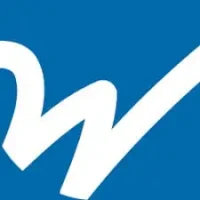This article is written by guest blog author, Kenzie Powley, Business Solutions Specialist, Bank of Sun Prairie
Many of our nonprofit organizations find today that maximizing earnings and securing their funds are equally as important to one another.
It’s also critical in this environment to reduce expenses and maintain liquidity, when possible, rather than to lock up the funds. Keeping this in the forefront, all while costs increase and, in some cases, volunteerism is declining. In addition to ensuring you have up-to-date and effective policies and procedures, you may want to consider a simple review of your banking strategy to help address these issues.
As a refresher, we’ve included high-level information on a few key types of bank accounts.
Checking or Deposit Accounts
Regardless of the size of the nonprofit, there is a checking account, that typically has minimal to no fees associated monthly fees associated with the account. That is important as nonprofits need to minimize expenses.
In some cases, depending on how the nonprofits are set up or structured, they may need multiple checking accounts and that can be accomplished for them.
Savings, Money Markets, and Certificates of Deposit
When it comes to savings, there are multiple ways to accomplish this, depending on the needs of the nonprofit.
- Savings accounts – funds are liquid in a savings account and the rate is variable. The interest rate available in the savings account will vary from bank to bank. Savings accounts used to have a requirement that only six withdrawals could be made monthly, and that regulation is no longer valid and went away during COVID.
- Money markets – accounts can have tiered rates and require a minimum balance; and will vary from bank to bank. Like savings accounts, there is no longer the six-withdrawal limit to money markets. With both savings and money markets, your funds are liquid and available to you.
- Certificates of Deposit – These are available in a variety of terms such as, 3, 6, 9,12, 24, 36 months and offer a variety of interest rates, many offering specials. This product could be selected if the money is not earmarked for something specific. Other ways to use CDs is to “ladder” them, often having one at a 6-month term and another at 12 months, allowing funds to be continuously becoming available. A penalty will or may be imposed for early withdrawal. This is another way nonprofit organizations can maintain liquidity.
Cash Sweeps through IntraFi ICS/CDARS
- The rate environment has significantly changed, and this has become very important to nonprofit organizations. Each business or nonprofit organization (per Tax EIN) is insured through the FDIC up to $250,000 in deposits. Because of this, our partnership with IntraFi Cash network has become essential. We are still able to establish these interest-bearing accounts for customers, keeping the deposits insured, all while maintaining their liquidity.
- With IntraFi Cash ServiceSM, ICS, you can enjoy the safety and simplicity that come with access to multi-million-dollar FDIC insurance through a single bank relationship.
- How does ICS work? We, like other institutions that offer ICS, are members of the IntraFi network. When we place your deposit through ICS, that deposit is divided into amounts under the standard FDIC insurance maximum of $250,000. The amounts are then placed into deposit accounts at multiple FDIC insured banks. As a result, you can access FDIC coverage from many institutions while working directly just with us.
Each of these options, deposits, savings, and leveraging IntraFi through banks that offer it, allow nonprofits to maximize their earnings all while insuring their deposits.
Cash management tools will help control and minimize expenses and increase efficiencies, allowing nonprofit organizations to focus on areas that maximize their effectiveness. Again, these services typically will have a cost to them, however, banks may have adjustments in place to work with their nonprofits.
- Online and mobile banking allows nonprofit organizations to deposit checks remotely through mobile deposit and/or an express deposit scanner, which limits trips to the branch.
- ACH allows nonprofit organizations to make payments or collect payments securely by minimizing public account information. It also increases the timeliness of collecting payments/funds.
- Sweep services have become a popular way to maximize and protect funds as well. There is overdraft protection, one-way sweeps, or two-way sweeps available.
- For example, those nonprofit organizations that want to maintain $250,000 in their nonprofit checking could set up a two-way sweep. So at the end of the day, funds would sweep in or out, making the checking whole at $250,000 and the remaining would sweep into the money market (potentially in ICS), earning at a higher interest rate.
- One of the most important services nonprofits should consider is fraud protection. What is fraud protection? Fraud protection is the implementation of a strategy to detect fraudulent transactions to prevent financial damage to the customer and financial institution. “Washing” or counterfeit checks are a growing issue with businesses and nonprofits alike. Given fraud has continued to increase significantly, fraud protection is key to all businesses.
- ACH Blocks & Filters – this tool allows the nonprofit to set the limit of the ACH (for example, any over $50.00) to be sent for approval prior to pay.
- Positive Pay for checks – allows check files to be uploaded to online banking and if the information, such as check amount, check number, payee, date issued and account number, doesn’t match, an exception would be sent and the nonprofit could indicate to pay or return.
- Volunteerism is essential to all nonprofit organizations and finding the right partner has become a very important decision. Aligning vision and values with the needs of the organization can truly impact both the bank and the organization, which together, betters the community.
- Bank of Sun Prairie is a community bank with more than 5,300 volunteer hours in 2023 for their 100 employees – giving back to the communities they serve is vitally important to them. It is, with this intention in mind, that they developed a program specifically customized for nonprofit organizations. Member FDIC.


